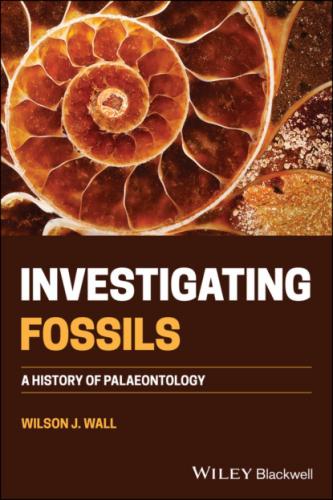Introduction
It may seem a slightly circular argument to look at the history of an historical record like palaeontology, but this is what the history of fossils is all about. It is because fossils are so enigmatic, in both origin and wider meaning, that the way they have been interpreted is so important. Such knowledge can tell us a great deal about the social and religious changes that have taken place over the lifetime of humanity. Which, to state the obvious, in geological terms humanity is a split second on the geological time scale of our planet. It is also worth remembering that for many species the fossil record is frustratingly lacking in detail. However, we do know that living animals are a small fraction of all the species that have ever lived. Given such knowledge, it is reasonable to spend considerable time pondering the fossil record, all the progenitors of modern species. It is also reasonable to consider the development of a science that flirts with geology and yet studies ancient species, all of which are extinct.
Before any meaningful discussion could be had regarding the importance of fossils, it had to be agreed what fossils were. It was not always known that they represented organic remains, they are, after all, stone, the most immutable of material. How could a plant or animal be turned to stone without divine intervention? Whether it was to help in developing our perception of ourselves and our position in nature, or to evolution and the origins of life, the apparent anomaly of fossils had to be understood.
It may seem self‐evident to us that fossils represent remains of living organisms, but as an untestable hypothesis this is something which requires a great deal of circumstantial evidence to demonstrate as near conclusively as it is possible to get. Part of the historical conundrum which vexed the earliest of observers was that these apparently animal remains, usually bivalve molluscs, were made of stone, and yet no animal has a stone carapace or skeleton. This contradiction between living organisms and fossilised species created a number of explanations of varying plausibility to explain both origin and position. These ranged from high seas to account for high‐altitude shells, to the rocks being inadvertently seeded with the life force of the found organism that could not develop properly in its rocky environment.
Nowadays we assume that in some way a dead body can become mineralised so that it has the persistence and solidity of stone. It should be understood, though, that fossil material can originate through several different processes of mineralisation, with the final product also varying quite widely, depending on the processes that have taken place. If fossilisation is considered a method of preservation, then most fossils are not well preserved at all, only the shape is retained, a morphological ghost of a living, breeding, physiological organism. Colours are lost with the process of mineralisation as are all the intricate biochemical markers that defined the organism. As we shall see, this loss of colour has allowed for wide and sometimes bizarre interpretations, of what a living fossil species might have looked like. This is different to how the animal may have stood or moved. There is adequate information available from fossil skeletons and knowledge of living organisms to give us a clear understanding of the three‐dimensional structure of species, but not their colour. There is something else which disappears; behaviour. There is a gap in our knowledge which it is difficult to see ever being filled, and that is the intricate ecology of prehistoric times. Beyond knowing that some species were carnivores while others were herbivores, details which can be inferred from teeth and skeletons, interactions are hidden by time.
While for most the idea of a fossil is of mineralised bones, it does not necessarily have to be so. The meaning of fossil has subtly altered over time from its original Latin root of fossilis, which translates as ‘obtained by digging’ through any found material to its current usage of preserved material, or possibly more accurately, preserved organic material. Using this definition, entrapped organisms in amber also constitute fossils, in this case with much more information preserved than simply a shape; but great caution should be exercised with this idea. The ideas put forward by Michael Crichton in his novel Jurassic Park (1990) may be very appealing, but this is just an imaginative fiction. There may well be preserved organic molecules in amber‐encapsulated specimens, but within any cell upon death DNA will rapidly start to break up into smaller pieces with increasing entropy. Although there is conflicting evidence regarding DNA decay, preservation in frozen material seems to be best, while long‐term preservation in fossilised material seems less and less likely. Work on DNA decay
